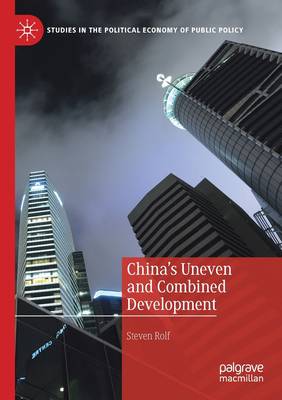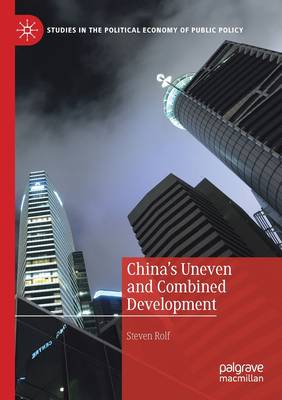
En raison d'une grêve chez bpost, votre commande pourrait être retardée. Vous avez besoin d’un livre rapidement ? Nos magasins vous accueillent à bras ouverts !
- Retrait gratuit dans votre magasin Club
- 7.000.000 titres dans notre catalogue
- Payer en toute sécurité
- Toujours un magasin près de chez vous
En raison de la grêve chez bpost, votre commande pourrait être retardée. Vous avez besoin d’un livre rapidement ? Nos magasins vous accueillent à bras ouverts !
- Retrait gratuit dans votre magasin Club
- 7.000.0000 titres dans notre catalogue
- Payer en toute sécurité
- Toujours un magasin près de chez vous
Description
This book mobilises the theory of uneven and combined development to uncover the geopolitical economic drivers of China's rise. The purpose is to explain the formation and trajectory of its economic 'accumulation system' -- which remains a confounding hybrid of statist and neoliberal forms of capitalism -- as the outcome of China's geopolitical engagement of the USA during the late stages of the Cold War, and its participation in manufacturing global production networks (GPNs). Fear of geopolitical catastrophe drove China to open its economy, while GPNs enabled China to generate substantial export surpluses which could be recycled through state-owned banks as cheap credit and subsidies to large, vertically integrated and politically-controlled state-owned enterprises. In this way, a synergy emerged between the 'neoliberal' and 'Keynesian-Fordist' sectors of the economy, while the national-territorial state retained its form and expanded its functions. The book chronicles how this reliance on export surpluses, however, rendered China extremely vulnerable to external shocks -- prompting a dramatic monetary and fiscal stimulus response to the crisis of 2008, even while sustaining the illusion of economic 'decoupling' from the global economy. Finally, it examines the growing role of the state in the current crisis-ridden economic model, as well as China's current geoeconomic and geopolitical expansionism in areas such as the Belt and Road Initiative and the militarisation of the East and South China Seas.
Spécifications
Parties prenantes
- Auteur(s) :
- Editeur:
Contenu
- Nombre de pages :
- 264
- Langue:
- Anglais
- Collection :
Caractéristiques
- EAN:
- 9783030555610
- Date de parution :
- 16-10-21
- Format:
- Livre broché
- Format numérique:
- Trade paperback (VS)
- Dimensions :
- 148 mm x 210 mm
- Poids :
- 371 g

Les avis
Nous publions uniquement les avis qui respectent les conditions requises. Consultez nos conditions pour les avis.






